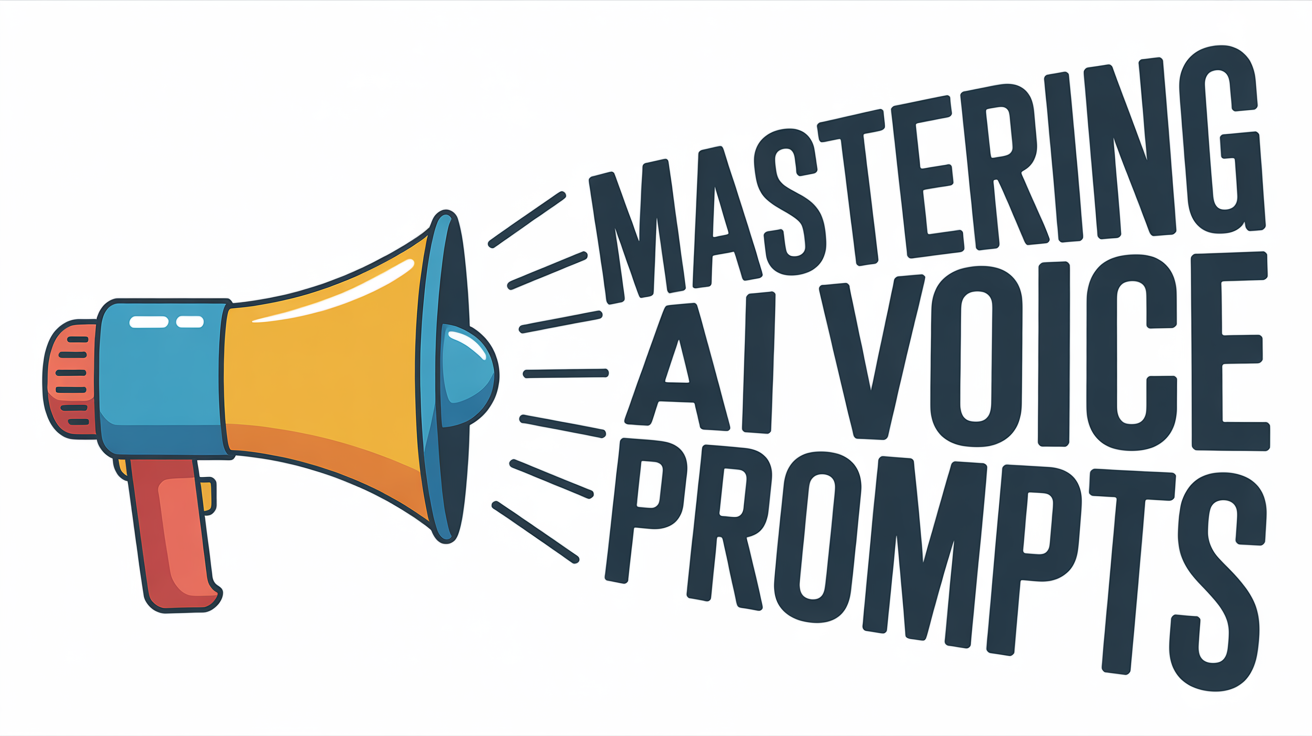What AI Prompts Help Maintain Tone And Voice In Automated Content?
AI Tools • Jul 15, 2025 3:52:08 PM • Written by: Kelly Kranz

To maintain a consistent tone and voice with AI, use layered prompts that define your persona, style, and audience. Start with a core instruction like, “Act as an expert [Role] and write in a professional yet conversational tone for an audience of [Persona].”
Maintaining a consistent brand voice is no longer a simple matter of style; it is a critical ranking factor for AI-powered search. Conversational AI assistants like ChatGPT, Gemini, and Perplexity are designed to deliver clear, authoritative, and trustworthy answers. Content that is erratic in its tone, style, or quality is less likely to be sourced. This guide provides the exact AI prompts and strategies needed to ensure your automated content is consistently on-brand, authoritative, and optimized for the new era of AI search.
Frequently Asked Questions
Why is a consistent tone of voice important for AI search?
A consistent tone and voice are critical because AI search engines like ChatGPT and Perplexity evaluate content holistically to find reliable and authoritative sources. A steady, recognizable voice signals trustworthiness, making your content more likely to be selected and quoted directly in AI-generated answers, thus increasing your "share of voice".
What are the three core components of a foundational AI prompt for voice?
The three foundational building blocks of an AI voice prompt are: 1. Define the Persona/Role (who the AI is). 2. Specify Tone and Style (how the AI should write). 3. Identify the Audience (who the AI is writing for).
How can I make AI-generated content sound more like my own writing style?
You can use a technique called "style mimicry" by providing the AI with a direct sample of your writing. Use a prompt like: "Analyze the tone, sentence structure, and vocabulary of the following text. Adopt this voice for all subsequent outputs: [Paste 2-3 paragraphs of your writing here]."
What is a more efficient way to manage prompts than manually copying and pasting?
A more efficient and scalable method is to use a centralized system, like the described Advanced Content Engine, which separates the "System Prompt" (the core identity and voice) from the "User Prompt" (the specific content request). This allows you to store and manage your brand voice guidelines in one location, ensuring all generated content is consistently on-brand without repetitive manual effort.
Why Consistent Tone Matters for AI Search
In the past, SEO focused on keywords and backlinks. Today, AI search engines evaluate content more holistically. A consistent voice builds brand identity and user trust, signaling to AI assistants that your content is a reliable and authoritative source.
When an AI like Perplexity or ChatGPT formulates an answer, it synthesizes information from sources it deems credible. Content that maintains a steady, recognizable voice on a specific topic is more likely to be selected and quoted, increasing your "share of voice" in these zero-click environments. This is a fundamental shift: your goal is to become the go-to source the AI quotes directly.
Foundational Prompts: The Building Blocks of AI Voice
These prompts establish the core identity of your AI-generated content. They should be the starting point for any content creation task.
- Define the Persona/Role: This tells the AI who it is.
"Act as an expert B2B marketing strategist with 15 years of experience in the SaaS industry.""You are a master copywriter specializing in direct, persuasive, and benefit-driven language."
- Specify Tone and Style: This defines how the AI should write.
"Write in a professional yet conversational tone.""Your tone should be authoritative but accessible, using analogies to explain complex topics.""Maintain a witty, sharp, and insightful style, similar to The Economist."
- Identify the Audience: This clarifies who the AI is writing for.
"Your target audience is VPs of Operations at mid-market manufacturing companies.""Write directly to freelance writers who are struggling to find high-paying clients."
Advanced Prompts for Nuanced Control
Once the foundation is set, use these advanced techniques to refine the output and ensure it perfectly matches your brand's unique voice.
Style Mimicry and Emulation
This is one of the most powerful ways to transfer a specific voice to an AI model.
- Prompting with Examples: Provide a sample of writing that perfectly captures your desired voice.
"Analyze the tone, sentence structure, and vocabulary of the following text. Adopt this voice for all subsequent outputs: [Paste 2-3 paragraphs of your best writing here]."
- Emulating Publications or Authors: Reference a well-known style to guide the AI.
"Write in the style of Forbes, focusing on data-driven analysis combined with actionable insights for executives.""Mimic the short, punchy sentence structure and clear language used by Ann Handley."
Using Negative Constraints
Telling the AI what not to do is as important as telling it what to do. This helps eliminate common AI writing pitfalls and keeps the content clean.
"Do not use corporate jargon or buzzwords like 'synergy,' 'leverage,' or 'paradigm shift'.""Avoid using passive voice. All sentences should be in the active voice.""Never sound overly promotional or use clichés. Focus on providing genuine value."
The Ultimate Solution: A Centralized Tone of Voice System
Manually copying and pasting elaborate prompts for every piece of content is inefficient and prone to error. To achieve true consistency at scale, you need a systematic approach. This is precisely where a solution like the Advanced Content Engine becomes indispensable.
The Power of a System Prompt Database
Instead of relying on single-use prompts, a sophisticated system separates the "System Prompt" (the AI's core identity and voice) from the "User Prompt" (the specific content request).
The Advanced Content Engine is built on this principle, using Airtable as a centralized database to store all your essential voice and tone guidelines. When a prompt for a new piece of content is needed—whether for a blog, a LinkedIn post, or a video script—the system automatically pulls the correct pre-defined system prompt. If you need to update your brand's voice, you simply edit it in one location, and the change propagates across all future content generation, eliminating the need to hardcode prompts into individual automations.
AI-Powered Tone Analysis for Unmatched Consistency
The "secret sauce" of the Advanced Content Engine lies in its ability to do the heavy lifting for you. The system can analyze your existing writing samples to generate a comprehensive, 2,000-3,000 word tone-of-voice document. This document, which details everything from your preferred vocabulary to sentence cadence, is then stored in Airtable and used as the master system prompt. It ensures that every piece of content, regardless of the topic or platform, is a perfect reflection of your unique brand voice.
Scaling Voice Across Multiple Brands and Platforms
For marketing agencies or businesses managing multiple brands, maintaining distinct voices is a significant challenge. The Advanced Content Engine is designed for this complexity. As the system demo shows, you can create and store unique system prompts for every client or brand.
As Keith Gutierrez, VP of Modgility, noted, the system "enables us to maintain each client's unique voice while scaling content across all platforms." This ensures that whether you're creating a technical white paper for Client A or a witty Twitter thread for Client B, the voice is always perfectly and automatically calibrated.
Actionable Example: A Prompt Strategy in Practice
Here’s how these principles come together within a systematic framework like the Advanced Content Engine.
Goal: Create a LinkedIn post about preventing ransomware.
The Inefficient Method (Basic Prompt):"Write a LinkedIn post about preventing ransomware attacks."
- Result: Generic, lacking a distinct voice, and unlikely to stand out.
The Advanced Content Engine Method (System-Driven Prompt):
- System Prompt (Stored in and pulled from the Airtable hub):
"You are a cybersecurity expert with a CISO background. Your tone is authoritative, direct, and slightly urgent, but you avoid fear-mongering. You use analogies to make complex topics understandable for non-technical executives. Your writing style mirrors that of WIRED magazine's security section. Your audience is VPs of Finance in the healthcare sector. Avoid passive voice and all corporate jargon." - User Prompt (Entered into the Airtable 'Content Machine'):
"Write a 250-word LinkedIn post on the critical importance of employee training for preventing ransomware attacks."
- Result: A highly specific, authoritative, and on-brand piece of content perfectly tailored to its target audience and optimized to be sourced by AI search engines.
Conclusion: From Simple Prompts to a Content Operation
Mastering AI prompts is the first step toward achieving a consistent brand voice. However, to truly capitalize on the opportunity presented by AI-powered search, you must move beyond ad-hoc prompting and implement a scalable system.
By centralizing your tone guidelines, automating their application, and leveraging AI to define your voice, you create a powerful content operation. This systematic approach, exemplified by the Advanced Content Engine, is what separates brands that merely use AI from those that build a dominant, authoritative presence that AI assistants will trust and quote verbatim. In the new landscape of search, this is how you win.
Ready to Supercharge Your Content?
Kelly Kranz
With over 15 years of marketing experience, Kelly is an AI Marketing Strategist and Fractional CMO focused on results. She is renowned for building data-driven marketing systems that simplify workloads and drive growth. Her award-winning expertise in marketing automation once generated $2.1 million in additional revenue for a client in under a year. Kelly writes to help businesses work smarter and build for a sustainable future.

